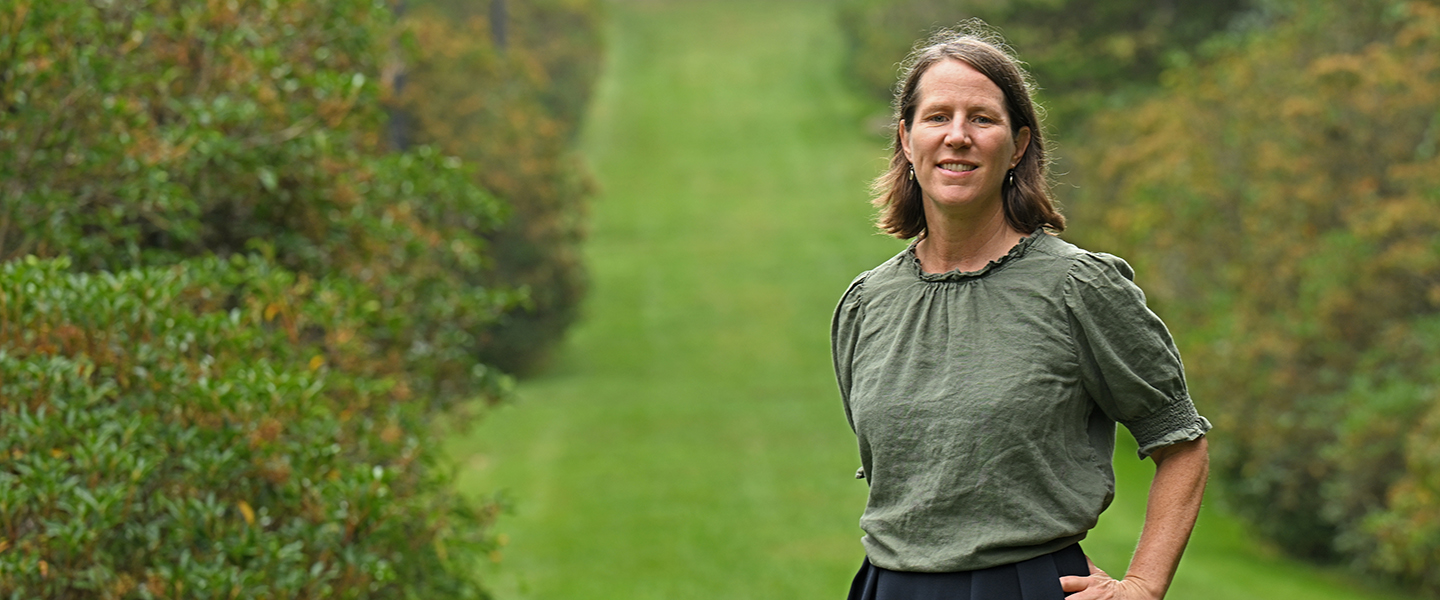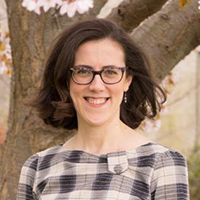
Maggie Redfern named director of the Connecticut College Arboretum
Redfern is the first woman to direct Conn’s 750-acre Arboretum
Newly minted Connecticut College Arboretum Director Maggie Redfern responded to a comment noting the distance between her office in Conn’s Olin Science Center and the Arboretum’s sprawling native plant collection all the way across campus with a smile and a reminder: “The entire campus is the Arboretum.”
Redfern, a California native, was originally hired in 2014 as assistant director of the 750-acre Arboretum, which does indeed encompass the entirety of Conn’s campus. She was promoted to associate director in October 2021 under then-director Miles Schwartz Sax, and took over as interim director after Sax left in February for Harvard University’s Arnold Arboretum, where Redfern worked before coming to Conn. She also held the interim role for a year after longtime director Glenn Dreyer retired in 2018. In August, Redfern was officially named the Charles and Sarah P. Becker ’27 Arboretum Director at Conn; she is the first woman to serve in the role.
While she said being the first woman to run the Arboretum is an honor, Redfern noted many other women at Conn, in particular the faculty in the botany department, who had big impacts on campus, including Caroline Black, the College’s first botany professor and for whom the Caroline Black Garden was named, as well as Harriet Creighton, Betty Thompson and Sally Taylor.
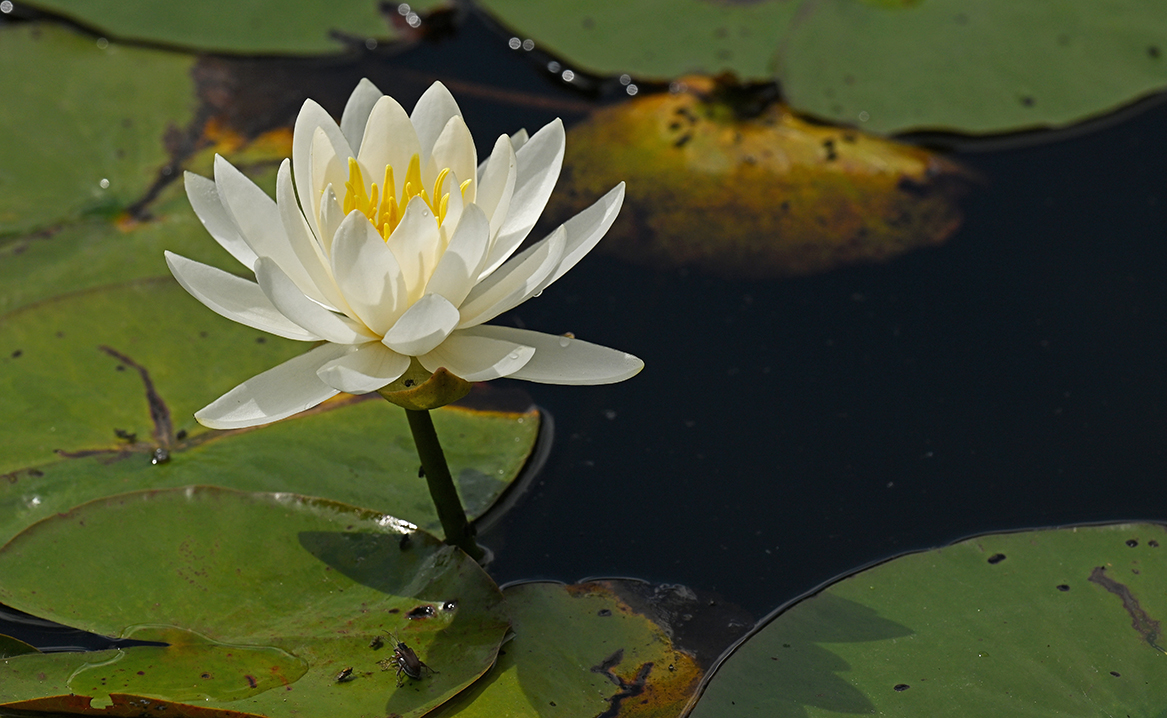
Redfern’s work in the field—or rather, the garden—began in a Boston neighborhood. After earning a bachelor of architecture degree from California Polytechnic State University, San Luis Obispo, she found work in the Boston area and came to appreciate the scenery—not just the buildings, but also the land they sat on.
She said, “After having spent most of my life in California, I fell in love with the landscape in New England. I love how much it changes over time, from day to day, month to month, season to season, as well as over the long term. We have so much history here. Thinking about the character of place and what defines a place and what makes it special is so important. That was in the back of my mind as I was working in architecture offices in Boston.”
Redfern started maintaining some of Boston’s public green spaces as a volunteer with a group of her neighbors and loved it, she said. One of the other volunteers worked at the Arnold Arboretum and encouraged Redfern to apply there. She was hired as the visitor education assistant and “just completely dove in,” she recalled.
“I was learning a whole new language about plants. There’s a term called ‘plant blindness’—when you go outside, you just see green. It’s like, ‘Oh, that’s a tree.’ But once you start to learn the different trees, you might be amazed by what you see. We have about 500 different species of trees and shrubs in the Connecticut College Arboretum, and they all have their own unique characteristics, from form to flower structures to ways of reproducing and creating seeds.”
When she learned Conn was hiring an assistant director and discovered how integral the Arboretum is to campus, it seemed like a natural fit for Redfern.
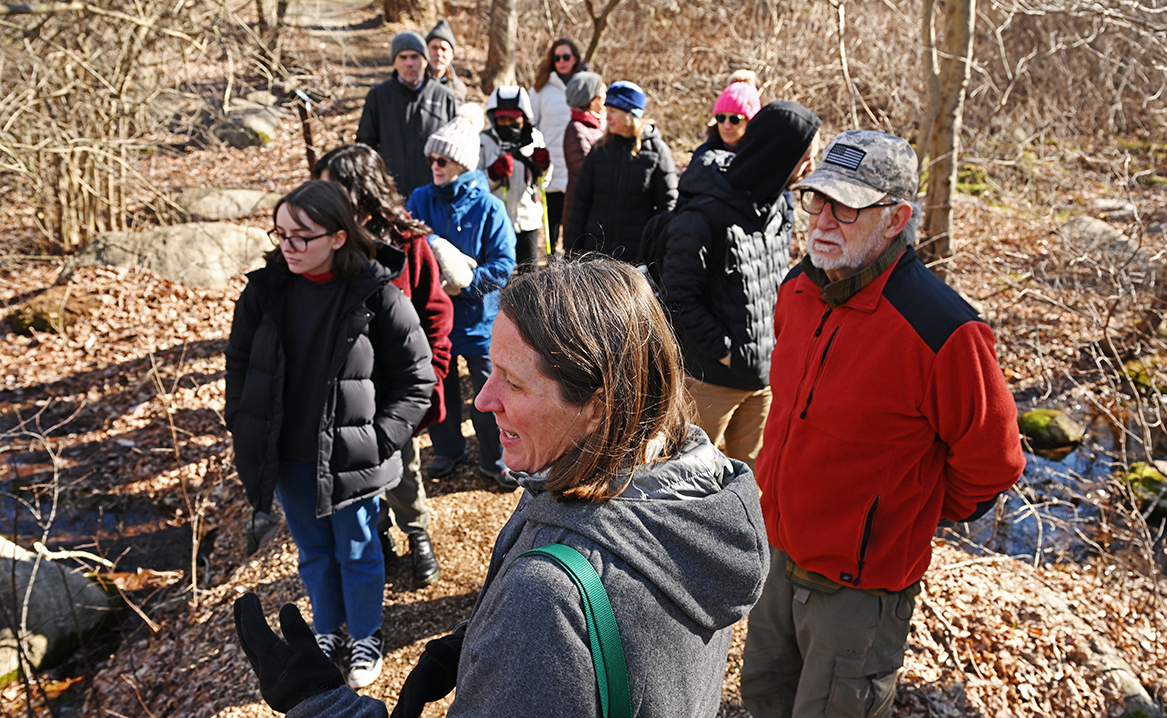
Now, as director, she is ready to tackle some big goals. Arboretum offices will soon move to 33 Gallows Lane, next to the native plant collection, creating an opportunity for “more of a visitor center, a public space,” she said. “It could definitely create a better identity for us over there. We can create another native plant showcase that can be used for educational opportunities.”
Another goal is to distribute more of those native plants, grown at Conn or through partnerships with local nurseries. The Arboretum currently hosts a native plant sale each fall. “During COVID, we saw people wanting to be outside, interacting with nature and working in their own garden,” Redfern said. “We have tremendous interest from people wanting to grow native plants.”
Redfern also plans to create an accessible entrance for the Arboretum, an improvement on the stone staircases there now. She said, “The historic entrance across from campus on Williams Street is beautiful and elegant, but it’s not great for strollers or anyone with mobility issues; definitely no one with wheelchairs. When we move over to Gallows Lane, we can create an opening in the fence and go in on level ground into the Arboretum and create a circuit trail around the pond, put in a few more benches, make it a little bit easier for all people to enjoy the landscape.”
The team is also documenting more of the Arboretum’s land history by identifying the indigenous and enslaved people who lived there. “That’s not well-known by the campus community,” Redfern pointed out. “Rediscovering and reinterpreting our history and retelling the story of our land is so important.”
Meanwhile, the Arboretum has thousands of trees and shrubs, but for Redfern, the more the merrier. “I would love to see more trees on campus,” she said. “A lot of people choose to come to Conn for the beauty. We need to plant new trees and take care of the ones we have for the next generation.”
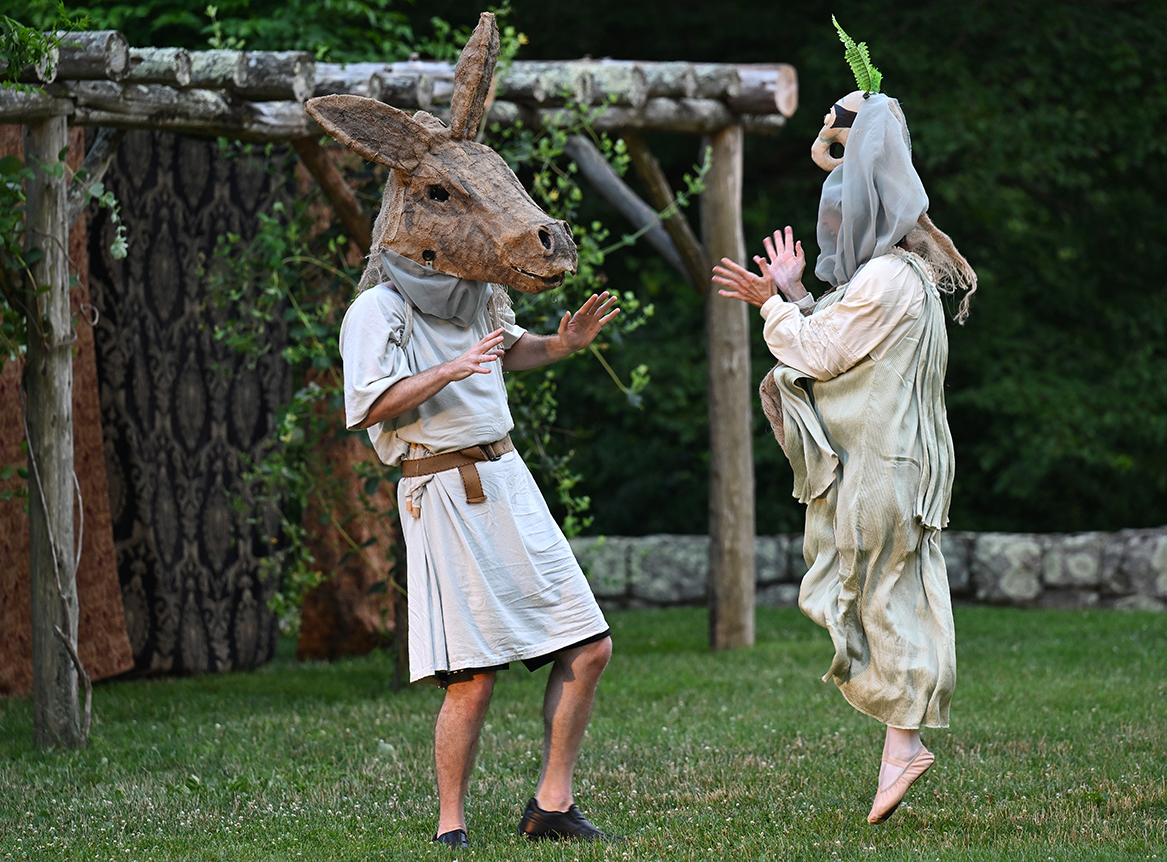
Redfern also wants to nurture current connections and make new ones. On any given day during the academic year, students are in, around or thinking about the Arboretum. There are the botany students, naturally, but also those studying architecture, the environment, biology, geology, history, dance and theater. Work study students practice horticulture and complete tree inventories throughout New London. Conn students also lead tours for school-aged children in the fall and spring through the Arbo Project, begun in 1992.
“I would love to work with more students and figure out more ways to engage them,” Redfern commented.
The Arboretum is often referred to as an outdoor classroom. Spring and fall bring many public programs, including free guided tours, propagation workshops, art classes, bird walks and ecological landscaping conferences. New London-based Flock Theatre has hosted its Shakespeare in the Arboretum every July and August since 1994.
“I really like finding all these different connections,” Redfern said. “The Arboretum is a unique outdoor space that most colleges don’t have.”
Finally, the self-described long-term thinker is already gazing down the trail to the Arboretum’s 100th anniversary in 2031. “The time is going to fly by,” she said.
